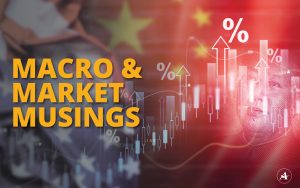Comments based on information available as of 7:30am CT on 4/10/2025
Growth: Not Whether, But How Much?
A week ago, the market seemed to be pricing in a near certainty of there being a recession. Now, the market seems to be pricing in merely a fear of a recession. That’s an improvement! Taxes of any sort slow growth, but it is an open question of how much slowing we will see and for how long. Provided there are not many more sector or product specific tariffs, and that there are negotiated deals quickly forthcoming, any broad economic slowdown could look more like a dip than a drop.
Inflation: Paying The Piper
Tariffs show up as higher consumer prices, but only to the extent that businesses can pass the tax onto consumers. The next few months we will see who pays the piper–or, rather, the tax. It will vary by product and by company. Larger firms tend to have more power to get suppliers to bear the cost than do smaller firms who might only have one supplier or little negotiating power. Brand loyalty could also matter. However, with inflation fatigue, consumers have been less loyal to brands and more willing to comparison shop. What doesn’t show up as inflation will show up as slower growth or lower profit margins. That could serve as a wall of worry the market will need to try to climb.
Policy: A Pause That Refreshes, Unless You’re China
President Trump’s 90 day pause on extra-large tariffs (compared to his baseline 10% tariffs) were met with a sigh of relief by the markets. But the tariffs are still large. While everyone else gets the 10% tariff rate, China is being hit with a 145% tariff rate. The math works out that the average effective tariff rate has actually increased as a result of the pause compared to what he announced April 2. Instead of spreading the pain globally, it’s being much more concentrated on China.
Looking Ahead: The Financial Plan As A Risk Management Tool
A lot of market risks can be managed through the tool of diversification. Diversification involves having a mix of thoughtfully selected stocks and bonds assembled in a way aligned with long-term goals and consistent with an investors willingness and ability to take risk. Event risks, like tariff policy announcements, are a lot harder to manage. That’s where a good financial plan can be a great risk management tool. By making sure there’s enough liquidity to meet upcoming cash flow needs doesn’t eliminate the volatility, but at least it gives the opportunity to be patient to ride things out. A good plan can help an investor avoid being a forced seller if things turn lower. In fact, a good financial plan can provide the option to buy if things go on sale.